There’s just enough room to jam the camera into the chassis and get an idea as to which capacitors and resistors are in use here. Again, it’s pretty basic as things should be in a dusty old amp….
Upon Closer Inspection
29 02 2008Comments : Leave a Comment »
Tags: amp, Blues, blues amp, Guitar amp, low watt, Silvertone, silvertone 1470, tube amp, Tubes
Categories : Silvertone
Under The Hood
25 02 2008The amp doesn’t seem to have been put together with the idea of easily servicing it; the speaker and baffle have to be removed to completely access the circuit. But by removing the screws that fasten the faceplate/chassis assembly to the cabinet, limited access can be had to the guts so we can take a peek.
The circuit is completely handwired and appears to be pretty simple with few components as can be seen here.
Comments : Leave a Comment »
Tags: amp, Blues, blues amp, Guitar amp, low watt, Silvertone, silvertone 1470, tube amp, Tubes
Categories : Silvertone
‘Round The Back
25 02 2008Taking off the speaker cavity guard, it’s plain to see that the cabinet is made of wood chipboard. The chipboard is pretty thin in places but it’s obviously held up well. The tube chart is pasted to the floor of the cabinet and indicates all the relevant information of the amp; Silvertone 1470 with a tube compliment of three. 50C5, 12AU6 and 35W4.
Comments : Leave a Comment »
Tags: amp, Blues, blues amp, Guitar amp, low watt, Silvertone, silvertone 1470, tube amp, Tubes
Categories : Silvertone
Full Whack
19 02 2008If you haven’t already figured it out, this amp is a Silvertone 1470. There’s hardly anything on the ‘net about this model, just two entries of small substance on Google the last time I checked. The only way I knew what it was is that it still has the schematic pasted on the inside of the cabinet.
At 100% volume, the little guy starts to roar a bit on the chords but still with a lot of touch sensitivity and it won’t bother anyone in the next room, let alone the neighbors. The bridge pickup sounds like a razor when you chop hard on a chord fragment or bluesy seventh chord while it’s a bit duller but still crunchy on the neck pickup. Single note lead lines are downright ratty and a bit harsh (probably has a fair bit to do with the Realistic speaker) on that bridge pickup while they sound gritty but definitely smoother on the neck pickup. It’s a good setting for moderate electric blues leads or gutty sixties rhythm guitar work but if you want to produce anything that packs a real punch, a stomp box would be a must.
I bought it from the music store I described a few entries ago, along with another small 60’s tube amp, which was even more obscure and that I’ll profile in the near future, for a grand total of $200 for both amps. I met the guy who owned it previously, he’s in his early sixties I think, and he had it for a long time and had no idea (or interest) on it’s history before he got it; he just played blues harp out of it.
I’ve run a ’74 Les Paul Recording (pictured below) through it at band rehersals and mic’ed it through our small pa, with a old early 80’s DOD 250 Overdrive for leads and it’s impressed people with what it puts out given what they think when they look at it.
To be honest, it’s a good amp but not a great one. For what it is, a tiny, quiet student practice amp with one nob, it’s pretty amazing but don’t get the idea that it’s anything other than a tiny, quiet student practice amp with one nob. If I can get it together to post sound clips here, I will.
Judging from other Silvertones, the graphics on the faceplate of the amp lead me to believe that it’s born on date is sometime between 1966-68, at the tail end of the Danelectro manufactured era and about the time when Sears started to phase out tube amps in favor of solid state technology.
I’m amazed that it still works after 40 years and works well. It was made out of the cheapest available components at the time but clearly manufactured with a lot of ability by Danelectro.
Comments : Leave a Comment »
Tags: Blues, Guitar amp, guitar amps, Silvertone, tube amp, Tube Amps, vintage guitars, vintage instruments
Categories : Silvertone
Winding Up The Wick
14 02 2008Going up to 75% volume, the tone of the amp doesn’t change that much from when it was halfway up, it just gets a little bit louder. Things do get a bit more crunchy on the chords as expected but the single notes are starting to have more sustain. On the neck pickup, lead lines are starting to have a bell-like initial attack while the bridge pickup drives the amp into producing the spikey, ratty tones of the early 1960’s of Buddy Guy but without any of the lows produced by his glorious Fender Bassman.
Comments : Leave a Comment »
Tags: Blues, Guitar amp, guitar amps, Silvertone, tube amp, Tube Amps, vintage guitars, vintage instruments
Categories : Silvertone
Let ‘Er Rip
11 02 2008Going up to 50% volume, the amp starts to bristle; chords get a warm, metallic sheen and have a lot of note definition. Single notes start to get a bit of sustain but it’s still in the realm of clean, although clean with a feeling, if you follow me. Overall volume level is still really quiet but in my situation, that’s a definite plus.
Comments : Leave a Comment »
Tags: Blues, Guitar amp, guitar amps, Silvertone, tube, tube amp, Tube Amps, vintage guitars, vintage instruments
Categories : Silvertone
First Impressions
10 02 2008It worked perfectly. With the volume at 8 o’clock, the amp was crystal clear and just amplified the guitar with no coloration at all. It sounded much like the guitar did acoustically with no amplification, just louder. But make no mistake, this is a one watt amp and it never actually gets “loud”. My guess is that the engineers who designed the amp, envisioned school age kids playing at this volume. You could defintely hold a normal conversation with someone while playing at this level.
Comments : Leave a Comment »
Tags: amp, Blues, Guitar amp, guitar amps, Silvertone, tube amp, Tube Amps, vintage guitars, vintage instruments
Categories : Silvertone
The Stage Is Set
8 02 2008Any trepidation I had left over from previous experiences was swept away by the $119 price tag on what was clearly a mid-60’s tube amp, convincing me immediately that it was worth a try to see if it actually worked! Bypassing numerous high-ticket brand name guitars, I grabbed a cheap single coil Strat copy (the cheaper the better…) that made it clear from the first strum that it was going to fight me all the way. Perfect.
Comments : Leave a Comment »
Tags: Blues, Guitar amp, guitar amps, Silvertone, tube amp, Tube Amps, vintage guitars, vintage instruments
Categories : Silvertone
Will It Even Work?
7 02 2008So many really small vintage amps that I’ve tried out in stores either completely didn’t work at the time or were in such need of repair that all they could manage to produce was a pale imitation of their voices when in good health. It’s happened so often that I sometimes don’t want to go through the motions. The big chain stores seem to be the worst at this and when I ask questions, no one who works there knows anything about the malfunctioning amp.
Comments : Leave a Comment »
Tags: Blues, Guitar amp, guitar amps, Silvertone, tube amp, Tube Amps, vintage guitars, vintage instruments
Categories : Silvertone
One Watt X One Nob = One Love
6 02 2008When I walked into my favorite music store last July and found this lurking in the back, I wasn’t quite sure what to make of it. It seemed so small and not in the best condition with a torn, stained grill cloth. Throw in the eight-inch Realistic speaker on top of everything else and I didn’t see how it was going to sound good.
Comments : 1 Comment »
Tags: Blues, Guitar amp, guitar amps, Silvertone, tube amp, Tube Amps, vintage guitars, vintage instruments
Categories : Silvertone
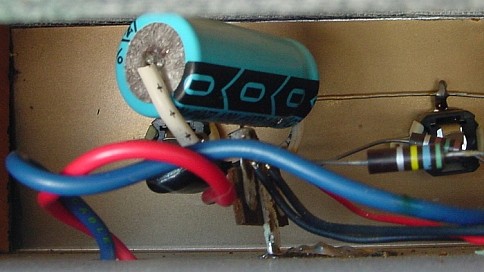
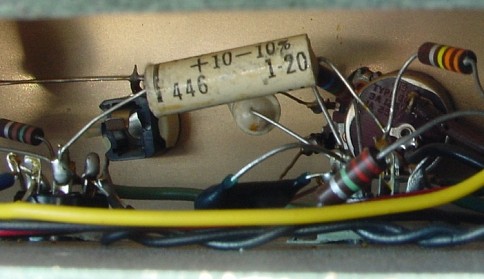

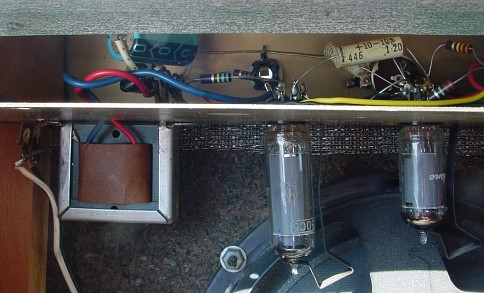

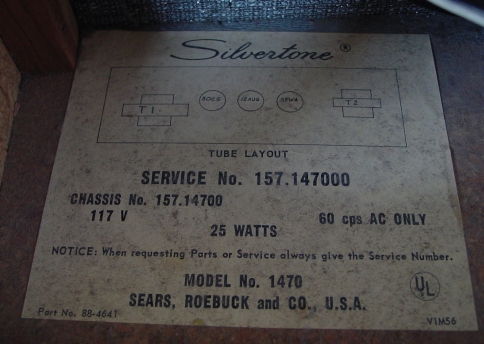
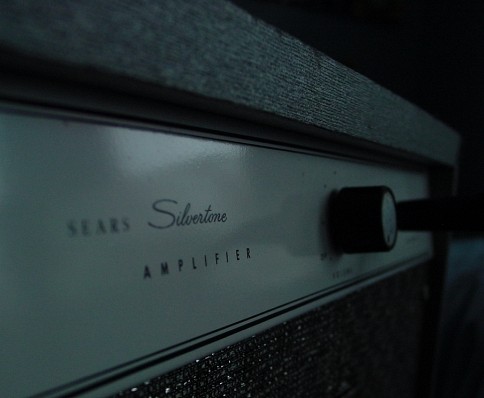

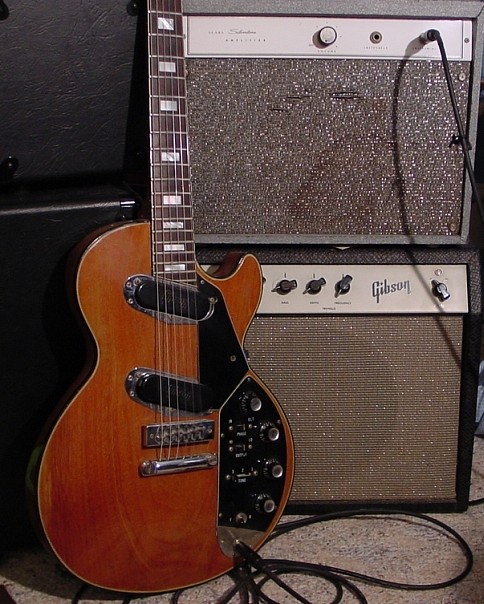
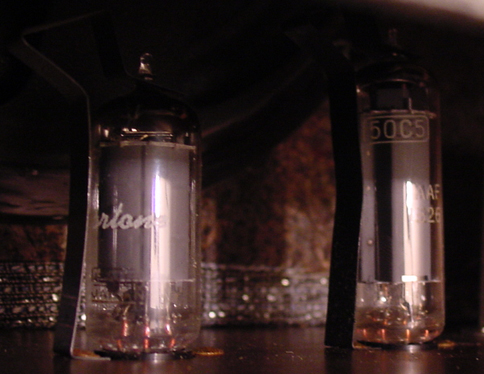
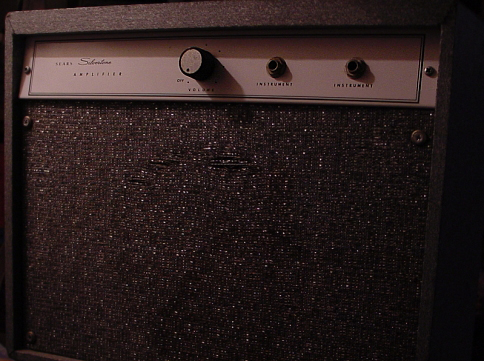




You must be logged in to post a comment.